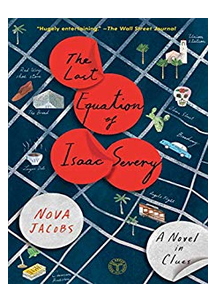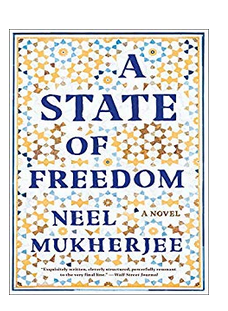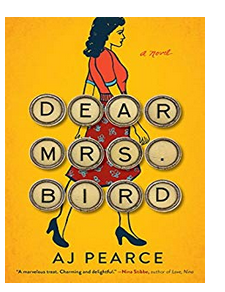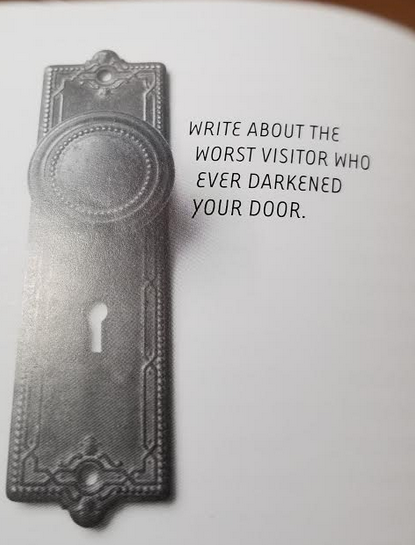As an avid reader, I frequently read about books, check reviews, and otherwise seek books to read and to recommend. I read eclectically and choose from fiction for adults as well as YA and juvenile books, along with the occasional nonfiction. My to be read list continues to grow. Some of the books that currently have my attention and that are on the list are found in this blog.

The Last Equation of Isaac Severy by Nova Jacobs promises to be a riveting read. It involves a mystery and a bookstore. What more could a book lover choose? Some readers might be put off by the addition of mathematics to the story. Isaac, mathematician, dies and the death is ruled a suicide. However, Hazel, his adopted granddaughter, receives a letter from Isaac in the mail a few days after his death. Isaac gives Hazel specific instructions to give the letter to one of Isaac’s colleagues. Before she can deliver the letter, however, she must discover a “bombshell equation” Isaac has uncovered. Hazel must put her powers of observation and careful thought to work to uncover the equation to avoid disaster to her family.

Jamil Jan Kochai has written 99 Nights in Logar with twelve-year-old Marwand as the main character. Marwand has visited Afghanistan six years earlier and now he is going to be living there. The stories from the Arabian Nights come to mind since Marwand must search for his family’s dog, Budabash, which has escaped. The quest to locate Budabash takes ninety-nine nights.
In The Thing About Jellyfish by Ali Benjamin, another twelve-year old, Suzy Swanson, must come to terms with the loss of her best friend who has drowned in the ocean while on vacation shortly before school begins again. The two should both be entering seventh grade. They have been close friends since they were five and in a swimming class together. Franny, Suzy knows, is an excellent swimmer, so how could she have drowned? On a school trip to an aquarium, Suzy visits the jellyfish exhibit and reads about dangerous jellyfish stings. Irukandji jellyfish, the most dangerous venomous jellyfish lives off the coast of Australia. However, it has begun migrating into other waters. As Suzy reads about the jellyfish, she wonders if Franny could have been stung by an Irukandji jellyfish, thus causing her to die, but the death appears as a drowning. Suzy begins an investigation into the jellyfish to see if Franny’s death has been caused by the poison instead of drowning. To add to Suzy’s sorry, she and Franny have had a falling out not long before Franny’s death, so Suzy thinks she is to blame for her best friend’s death.

On quite another note, Soniah Kamal has written a modern-day retelling of Pride and Prejudice and set it in Pakistan. Alys Binat has decided she will not marry. That promise to herself is all well and good until she meets Mr. Darsee at a wedding, of course. Unmarriageable recounts the story of the Binat family’s five daughters with Alys being the most practical of the girls. Alys is teaching English literature in a girls’ school. Alys focuses on Jane Austen and other literary heroes in hopes of inspiring her students to dream of more than an early marriage and children. Can Alys stick to her plan or does she succumb to Mr. Darsee’s charms?

When I can find excerpts to read of new books, I often then become hooked on finding the book so I can read the whole story. That happened with The Peacock Feast by Lisa Gornick. Gornick has developed a story about the multigenerational O’Connor family. Grace, Prudence’s niece, visits Prudence and thus begins the unscrambling of family secrets including the long estrangement between Prudence and her brother who is now deceased.

After reading about A State of Freedom by Neel Mukherjee, I immediately requested the novel from the library. Mukherjee has received a great deal of praise for writing about “the central, defining events of our century: displacement and migration.” Taking five characters of vastly different backgrounds, Mukherjee has developed a story set in contemporary India and told through various narratives. The characters even include a vagrant and his dancing bear. Who could not wish to at least dip into A State of Freedom?

Dear Mrs. Bird by A.J. Pearce keeps appearing in lists and articles about books. The story takes place in London in 1940. Emmeline Lake wishes to be a journalist. When she sees an advertisement seeking a columnist for the London Evening Chronicle, she thinks she has found her dream job. Instead of being a war correspondent, however, Emmeline lands the job of typist for Mrs. Bird, an advice columnist. Mrs. Bird says all letters containing any unpleasantness must be thrown away. Emmeline becomes intrigued with such letters and begins answering them herself on her own, much without Mrs. Bird’s knowledge.

Finally, a memoir called The Little Bookshop of Big Stone Gap: A Memoir of Friendship, Community, and the Uncommon Pleasure of a Good book by Wendy Welch caught my eye. The last part of the subtitle, the uncommon pleasure of a good book, could hardly be ignored. In her true story, Welch writes about the bookstore she and her husband opened in a small Appalachian coal town. Because of their love of books and their dream of finding a place of their own, they succeed despite many odds against them: a declining US economy, a small town with no industry, and e-books.
Many books, many stories, many choices!
























